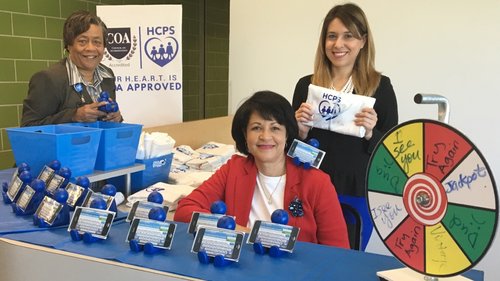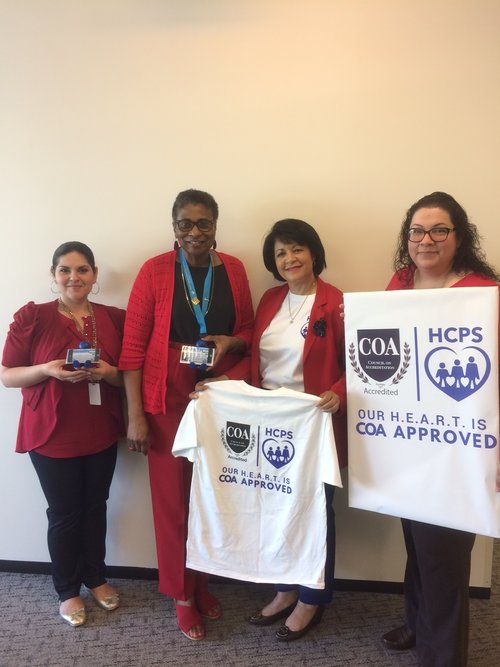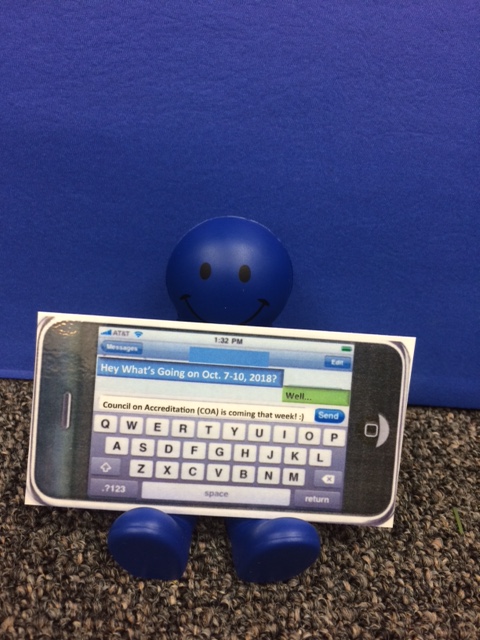The Interpretation blog is meant, first and foremost, to be a resource for the COA community. We had several 2019 posts that our editorial team was proud of, but wanted to take a moment to highlight those that we feel are most helpful to organizations thinking about accreditation or going through the accreditation process.
The Benefits of Organizational Accreditation

When it comes to accreditation, we at COA believe strongly in a whole-organization approach. This post explores why we do things that way and how an organization stands to benefit from looking at themselves with a holistic lens. Find the post here.
Roadmap to Preparing for the Accreditation Process

Once an organization decides to pursue (re)accreditation, it can be difficult to know what step to take first! This post does a great job of walking through the considerations of preparing your team for the process and making sure that your workflow sets you up for success. Find the post here.
PQI: A Whiteboard Video

Some of the most common questions we get at COA revolve around what “Performance and Quality Improvement” means, why we emphasize it so much, and why organizations should care about it, too. This post (and its whiteboard video!) offers a nice, succinct introduction to what PQI is and why it matters. Find the post here.
The How and Why of Strategic and Annual Planning

Developing formalized plans can seem overwhelming, so some organizations might be tempted to put it off. But planning is an important part of the accreditation process, and essential to making sure that you carry out your mission! As its title suggests, this post explores both the why and how of strategic and annual planning. Find the post here.
Top 5 Tips and Tricks for Primary Contacts

The Primary Contact (an organization contact that communicates with COA throughout the accreditation process) is key to making sure that accreditation goes smoothly. If it’s your first time through, the job can seem intimidating. Fortunately, this post (sourced from real COA Accreditation Coordinators) has plenty of tips to help! Find the post here.
Bonus: Profiles in Accreditation
If this is your first time through the accreditation process (or you just want to hear tips from other COA-accredited organizations about making the best of it!), check out our Profiles in Accreditation post series. Launched in 2019, it contains interviews from a variety of organizations who describe first-hand what they got from accreditation, how they handled the workload, and more. Checkout the series below!
- Profiles in Accreditation: Ranch Ehrlo
- Profiles in Accreditation: Rose Brooks Center
- Profiles in Accreditation: Lad Lake
- Profiles in Accreditation: Family Service Lincoln
And there you have it! What were your top posts for 2019? Share your thoughts in the comments below.
So, you’ve been designated by your organization as the Primary Contact—the point person for communicating with the Council on Accreditation (COA) and spearheading the accreditation process. Maybe you’re feeling a little overwhelmed; you might not be sure about the best way to get the job done. Fear not! We’re here to help with tips on how to make the process as smooth as possible, whether this is your first time managing the accreditation process or your fifth.
1) Get organized

If we were to create a job description for the Primary Contact role, strong organizational skills would be first on the list of required traits. You need to be able to organize, prioritize, and project manage. This includes assessing the scope of the work, identifying available/necessary resources, and planning for the completion of tasks while working towards deadlines.
There are a lot of moving parts during the accreditation process, so it is critical to stay on top of due dates and important notifications from COA. You also need to make sure that these are communicated within your organization, and that you clearly outline expectations regarding the workload and workplan for other staff to maintain efficiency.
Sound like a lot? Don’t worry! We have some resources that can help those efforts. Here are a few to get you started:
- SELF-PACED TRAINING: Getting Organized/Creating a WorkplanThis self-paced training provides guidance on coordinating and managing the work of the self-study process, with the goal of developing a comprehensive accreditation work plan.
- BLOG POST: Roadmap to Preparing for the Accreditation Process Another handy, step-by-step guide to help you get a handle on the various tasks involved with accreditation.
- BLOG POST: Creating Effective Workgroups on the Road to AccreditationGet tips on how to organize and delegate work to different staff.
- MYCOA PORTAL: Your Standards and Self-Study StepsWe built the MyCOA Portal with the goal of setting you up for success. The Standards & Self-Study tab (option five in the blue navigation bar at the top of the screen) is one good example of this: it features a checklist of steps to complete during the Self-Study process; a progress bar to help you track how you’re doing; and links to important documents to help you along the way.
2) Communicate clearly and often

The accreditation process centers around good internal and external communication.
From an external standpoint, as the Primary Contact you are responsible for overseeing all communications between your organization and COA. Whether it is over the phone or email, it is essential to keep your Accreditation Coordinator in the loop about any significant program updates or organizational changes.
From an internal standpoint, it is important to have staff, management, and your governing body appropriately informed of the process. This will not only help everyone work together to get things done, but also ensure that accreditation’s benefits are felt organization-wide.
Pro tip: Maximize your relationship with your Accreditation Coordinator
COA partners with organizations throughout the accreditation process. A key component of that partnership is the relationship between the Accreditation Coordinator and you, the Primary Contact. Here are a few suggestions on how to capitalize on this unique benefit.
- Schedule – and really use to your advantage! – a monthly call, especially if it’s your first time going through the process. Having the time carved out on your calendar ensures that you have time specifically dedicated to accreditation each month. (Ex: “I have my call with my Coordinator next week and I haven’t looked at the FPS standards yet – let me get on that now!”) We understand that everyone has a million things going on in addition to accreditation, so blocking off time for checking in and asking questions is one way to stay on top of things.
- Check out our extensive accreditation resources first before bringing any additional/clarifying questions onto your call. This will make sure that you’re using your time with your Accreditation Coordinator as productively as possible.
- Involve other staff members in the monthly calls. Not only can this be a more efficient way to get everyone on the same page, but it also makes the process more team-driven and rewarding. This allows other staff members to “get to know” the COA voice on the other end of the phone to experience the partnership firsthand.
- Whether for scheduled calls or when staying in contact in general, it is helpful for Accreditation Coordinators when Primary Contacts gather and send questions all at once, especially very specific standards questions. This is particularly beneficial when it comes to monthly check-in calls. If questions are sent over (in one email) a few days before the call, it gives the Accreditation Coordinator time to prepare and touch base with their team/the Standards Development Department as needed, which maximizes your time and makes for a productive conversation.
3) Be transparent

Transparency is another critical factor to your success as a Primary Contact. This goes hand in hand with being a good communicator.
We often say that the Self-Study process is like holding a mirror up to your organization. This works best for everyone when the mirror is a clear one! Your Accreditation Coordinator is there to provide technical assistance and targeted support, but they can only do so if you communicate honestly about your struggles so that they can help you navigate your pain points. Identify your organization’s needs and be eager to ask questions.
This advice applies when communicating within your organization as well. Often, we find that one staff member doesn’t always hold all the knowledge/documents that are necessary to complete the accreditation process; therefore, it is important that you approach other staff and pull them in as a resource when needed.
4) Get involved

We’ve already highlighted the importance of working with your Accreditation Coordinator – they are there to answer questions, interpret the standards, and guide you through the process. But don’t forget about all our other resources that are there for you to tap into!
If it’s feasible time- and budget-wise, attending our live Intensive Accreditation and Performance and Quality Improvement trainings can be very impactful, particularly if you or your organization are new to the accreditation process. We hold these trainings a few times a year. They are a great resource not only for taking a deeper dive into managing accreditation and learning strategies to enhance your PQI system, but also for networking with (and learning from!) colleagues that are in the same boat as you. Attending these is not a prerequisite for being a stellar Primary Contact, of course, but they are helpful if you can make it to them.
COA also has a plethora of self-paced trainings, tip sheets, tool kits, and more. Your MyCOA Portal will offer suggestions of which of these will work best for you at different points in the accreditation process. Be sure to use it! You will find everything that you need there to successfully navigate the process. The portal is secure, customized and will always include the specific information that is relevant to your organization.
Digging into these resources will provide you with a good overview of 1) how COA is going to review your organization, and 2) all the major milestones you need to hit along the way. This will help you to grasp the amount of work needed and the different deadlines that your organization is going to approach. Knowing these will help you guide others in your organization toward success.
Pro tip: Find your tribe
COA lists all our accredited organizations on our public website. Use the Who is Accredited Search to find peer organizations by location or service area. This practice can help you create a network and empower you and other Primary Contacts to access resources, share information, and ultimately make the most out of the accreditation process.
5) Be an accreditation cheerleader

Getting through the accreditation process is all about creating and maintaining momentum with your team. COA’s review is very comprehensive, and so it includes many potential ways for different staff to participate. Establishing and championing those opportunities can contribute to making accreditation more fun, rewarding, and successful.
We encourage Primary Contacts to tap into their creative side. Try developing a game that incorporates COA’s accreditation standards or creating a fun visual that tracks your progress. Your job is all about being a good motivator, so celebrate the victories both big and small. With as hard as you’re working, you all deserve it!
Though being a Primary Contact can feel like a lot of responsibility, rest assured that accreditation is by no means a one-person job. The process–from pulling together Self-Study evidence to preparing for the Site Visit–should be a team effort. Your role, then, is of a team captain. With these tips, we hope you can get out there and lead your crew to success!
Further reading
If you want to do a deeper dive, we’ve pulled together some additional resources below. Don’t forget to also check out those linked directly in your MyCOA portal.
- Accreditation Learning Plan
- Preliminary Self-Study Fact Sheet
- Three-Part PQI Recorded Webinar Series
- PQI Tool Kit
- Intro to Logic Models
- Governance Standards Tool Kit
- Policies and Procedures Checklist
- Preparing for the Site Visit
The accreditation process is most valuable when staff throughout the agency are engaged, but this isn’t always easy. Harris County Protective Services for Children and Adults shares the fun, interactive methods they used to promote the culture of COA and gain staff buy-in.
The phrase “THEY ARE COMING” typically strikes fear in the hearts of agency staff and leadership preparing for a reaccreditation Site Visit. Even scarier is that a lot of the staff not directly involved in the process never know exactly who “THEY” are.
Since the last Site Visit 4 years ago, our organization had experienced many changes to leadership. Our Quality Improvement Team had transitions in roles and was now staffed with a diverse team with a fresh set of eyes for COA.
As a team new to the process, one of the first things we did was an assessment of staff feelings and knowledge about COA.
Challenge #1: Even though our organization has been successfully reaccredited since 1978, staff still remained in panic mode.
When it was time for our formal Site Visit COA continued to be viewed as a separate entity, a “THEY” of sorts. We wanted to be sure that the view was of our partner helping us to identify strengths and areas for improvement in ways that may not be immediately apparent. We realized that part of the issue was that historically, we had not engaged and educated ALL staff (and not just those involved in turning in evidence). We needed to reframe staff perceptions as COA being a positive experience and focus on the benefits of the visit instead of just focusing on meeting deadlines to turn in evidence.
Challenge #2: What did we do to engage staff before? What resources do we have to engage over 19 different programs with field and on site staff?
We convened a think tank of new and seasoned staff from Quality Improvement, Communications and our Training Institute. At the last Site Visit we were only able to reach staff via email blasts and a creative “Go for the Green COA Poem.” Though staff comments about COA from past surveys and focus groups was reviewed, it was hard to track who actually opened the emails and who really took-home the message of what COA is all about.
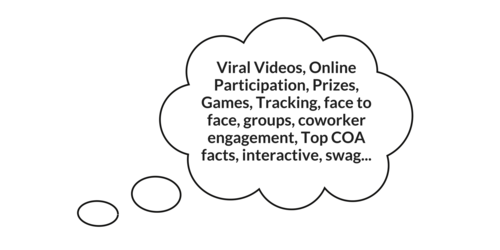
We wanted to do something different and FUN that would appeal to our two majority generations in the agency identified from our annual staff survey: millennials and baby boomers.
Out of our think tank was born the theme for our COA Kick Off Week online Challenge, “Who Wants To Be A COA-Knowledgaire”, which included a teaser video about COA starring our own “COA Queen” which addressed and made light of staff feelings about COA.
Teaser Video
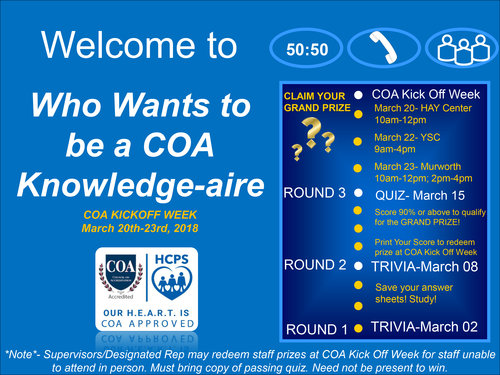
We also found online templates for interactive Power Point Shows that were clickable to reveal correct (or incorrect, buzz!) answers that staff could complete each week to gain knowledge instead of having to read long text.
If staff passed the Grand Challenge Quiz (via Survey Monkey) with 90 or above, they were eligible to redeem limited edition swag items. The swag items, though a small investment from the Quality Improvement department ($2,000), made for an effective incentive that got many unfamiliar faces involved and increased word of mouth.
At the end of the challenge, almost 50% of our staff had participated visiting us in person at each site to collect their unique swag, a huge participation success for a governmental agency.
The Quality Improvement Team showing off their COA swag.
We have additional engagement activities planned for the months leading up to our visit to keep the momentum going and to continue promoting our Site Visit as an opportunity to showcase our programs and to learn about the up and coming best practices for social service agencies and nonprofits. To learn more about HCPS on their website and Facebook.
Resources
- Flip card Trivia
- How to make a power point show auto-run and clickable
- WHO WANTS TO BE A MILLIONAIRE GAME TEMPLATE sample template by Mark Damon
The views, information and opinions expressed herein are those of the author; they do not necessarily reflect those of the Council on Accreditation (COA). COA invites guest authors to contribute to the COA blog due to COA’s confidence in their knowledge on the subject matter and their expertise in their chosen field.

Emmony Pena
Emmony is a Licensed Master Social Worker from the University Of Houston Graduate College Of Social Work with a focus on program development and evaluation. She has 5 years of experience in Data Analysis and Process Improvement through her graduate research assistant experience at MD Anderson and in her current role as Quality Improvement Professional at Harris County Protective Services. Emmony’s goal is to engage staff in performance and quality improvement activities and in plan-do-study-check act cycles.
Emmony monitors the implementation of the agency’s Performance and Quality Improvement plan and provides technical assistance and leadership to programs in the areas of Council on Accreditation standards, data collection, logic model development, focus groups, case review audits and trainings.
Certifications: CANS Assessment (Child and Adolescent Needs and Strengths) Certified
When beginning the accreditation process – specifically the completion of the Self-Study – one of the most intimidating challenges can be trying to figure out how to organize the work and delegate it to your staff. You don’t need a certificate in project management to accomplish this task (although having one won’t hurt!). What you do need is prep time, focus, and a solid understanding of what’s expected.
This post will discuss how to form effective workgroups that can assist your organization with completing the necessary work in order to achieve accreditation – and hopefully improve your organization’s operations as well. Now let’s get started.
When talking with organizations in COA’s network, we see a variety of types of workgroups. Some small organizations do not form new workgroups; they simply utilize a currently existing structure to fill the role. On the other hand, large organizations may develop multiple workgroups that focus on different aspects of the Self-Study. Only the organization can determine what the best model is going to be, but we can certainly explore some basic characteristics.
According to Kozlowski, S. W. J., & Bell, B. S. (2013), workgroups have the following qualities:
- They consist of two or more people
- Their participants are part of the same organization
- They have a common goal
- Their tasks are completed together and individually
- They involve social interaction
- They retain boundaries established by the organization
- They are part of the culture of the organization
One is the loneliest number
If your workgroup only consists of you thenyou should probably revisit your plan to achieve accreditation. Even for small organizations, all levels of staff should be involved in some way. There are multiple benefits to involving many people. First off, staff will have a better understanding of the importance of accreditation if they are embedded in the process. If the process is presented to them in a positive way then they can take ownership. A common question is “how can you present accreditation to staff in a positive way?” While it’s difficult to imagine how anyone can view accreditation in a negative light, talk with your staff – particularly those that you want to engage in workgroups – and bring the focus to achieving client outcomes. The purpose of accreditation is to improve outcomes for those that receive your services. Every action that takes place in accreditation should be tied to the end user: the consumer.
Another way that staff can buy-in to participating in a workgroup is to view it as a professional development opportunity. In fact, you would be remiss if you didn’t. Think about your shining case managers, clinicians, administrative assistants, residential managers, and foster care workers who have impeccable paperwork, organized with to-do lists, and always volunteer for new projects. Working on COA-related activities can improve their administrative and leadership skills, expand their knowledge of social service management, and program development.
“Every action that takes place in accreditation should be tied to the end user: the consumer.”
A chance for collaboration!
Another commonality in workgroups is that they are all part of the same organization. Note that it’s within the organization, but not necessarily within the same department, division, or satellite office. Workgroups foster cross-departmental collaboration. For example, let’s say that you are going to create a workgroup that focuses solely on drafting and reviewing procedures for the organization. For medium-large organizations, having this type of committee helps ensure that there is consistency across the organization, standards are still being met, and duplications are avoided. Including staff from different departments and different levels can provide different perspectives. Perhaps a member of management reviews a procedure and thinks “wow, this is great and will really help improve the reliability of our data.” Then a member of the direct service staff, who is also part of this committee, reviews the same procedure. She may have a comment such as “the intent of this procedure is spot-on, but the ability to put this in practice is unrealistic.” What’s better than a well written procedure? – A procedure that is actually practical. Having a diverse group of individuals within your organization as part of the accreditation workgroup is essential to change that is effective.
Find common ground
Common goals are an essential characteristic of workgroups. Having common goals relates to proper planning. If you establishing one committee or 3 committees to complete the work, there needs to be a goal that is achievable. You may think, “The goal is to get accredited.” Good point, that is the goal, but that’s the goal of the entire organization; not of the workgroup. The workgroup’s goal may be to establish a working PQI system, assess current practices to COA standards, or assemble the Self-Study. The goal of each workgroup will clearly delineate its role in completing the larger mission: achieving accreditation – and as we discussed earlier - to improve outcomes for consumers.
To further break down the goal, we need to identify specific tasks that support the actual completion of the workgroup’s goal. Planning, again, comes into play. Recognizing that planning is not everyone’s strong suit, there are some resources out there to assist. While COA doesn’t endorse any specific resource, we do find these helpful. Meister Task is an efficient task management application that can be used to organize individual tasks as well as collaborative tasks. Consistent with our definition of workgroups, there are both individual tasks and tasks that people must work on together. This web application can help support and provide structure to both. Another great application is Wunderlist. It provides some of the same functionality with a different style. If you are not quite ready for that level of organization and need some foundational support, try reading Getting Things Done: The Art of Stress-Free Productivity by David Allen. It’s an easy read that will help you organize your life, as well as your accreditation work. Remember, if you do utilize any of these resources, it’s recommended to take a full day to sit back and focus on implementing these systems for your work.
Assigning the work
However you handle the workload, a workgroup has tasks that are completed individually and some that are completed by more than one person or a subgroup of the committee. When tasks of the workgroup are being assigned to its members you will want to consider the strengths and weaknesses of each member. Initially, it may be your gut reaction to assign tasks that are good matches to individuals’ strengths; however, also consider matching someone’s weakness to a task to help them further develop. Perhaps pairing that person with someone who does have more experience can be a great learning opportunity. Make the most out of your accreditation experience and use it to support a positive learning environment. Maybe you can even develop mentorships within your staff, with the accreditation work as the central theme.
Involve social interaction, have you ever tried to hold a committee without social interaction? Typically that’s an email with directives to everyone involved with no discussion. Sometimes effective; most of the time not. At the beginning of the process of forming your workgroups, you will be concurrently developing the buy-in of the workgroup members. Meeting in-person, with sugary treats, that typically helps (personal favorite: Insomnia Cookies). If you can’t have fresh cookies delivered, consider holding the meeting outside of your organization, at least for the first time. Use this common goal, develop strong collegial bonds that last past COA Accreditation. And finally, manage your meeting efficiently. Here are some tips from Mindtools.com.
Introducing accreditation to your culture
Maintaining boundaries that are consistent within the organization may be a little bit more challenging for an accreditation workgroup. The group may be perceived by others in the organization as closed-off or working on something has nothing to do with the rest of the staff. One remedy for this perception is to provide communication about the status of the workgroup throughout the process to the rest of the organization. The workgroup is not charged with setting completely new and rigid policy, determining who at the organization is underperforming, or planning a coup d’état. Transparency is key, solicit feedback from staff who may not be directly involved. Always ask for volunteers, although don’t expect a waitlist. The accreditation workgroup is not a clique; it is a model for how people work as a team to achieve a seemingly insurmountable task.
Lastly, it is important to maintain key components of the organization’s culture. You can expect shifts, bumps and slides during the process, but the core of your organization will grow stronger. Your culture is the cornerstone of stability for your staff, who spend 40 hours of their lives there each week. It is a safe place for consumers whose lives you change. It is part of the connective tissue that holds your community together. Change may be inevitable but the culture of your organization is the reason for your continued success.
Share your tips!
What tips do you have for developing a strong workgroup or sustaining it once it is in place? Please leave a comment below and help others learn from your experiences.

